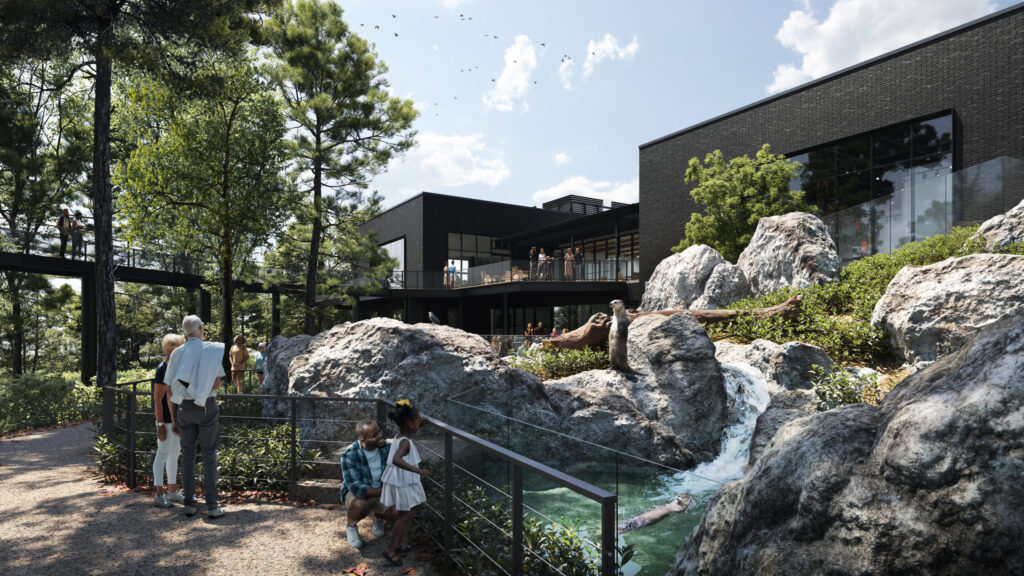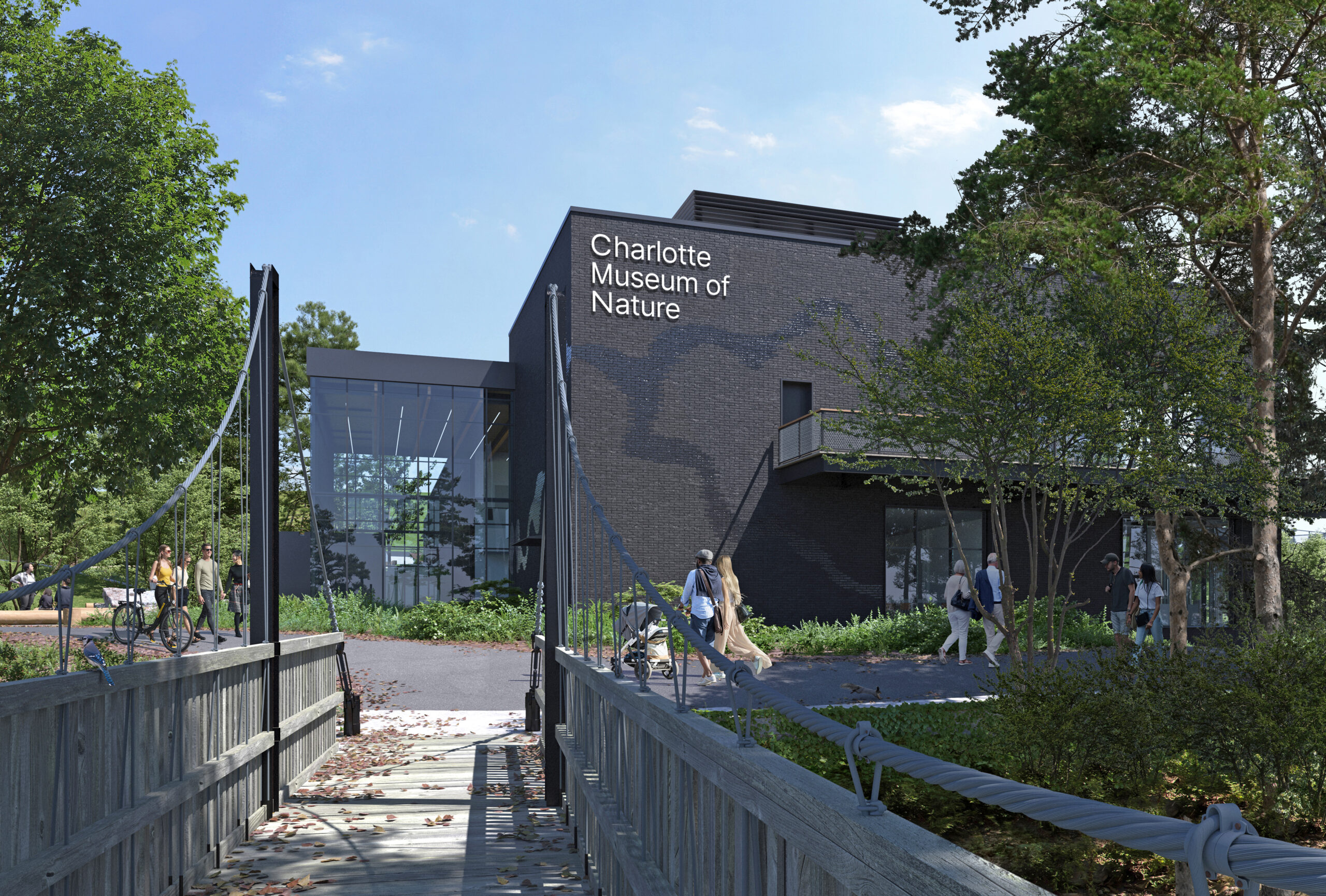A few Sundays ago, I shared with you a simple question posed by my child — “Do spiders go asleep?” — and received one 239-word response, which was 238 words more than I expected.
The spider man with the answer was Elliot Provance, Discovery Place’s senior director of collections. “Not in the sense of what a human thinks of as sleep,” he wrote. “There’s actual research currently underway regarding spider sleep.”
Spiders, it turns out, don’t have eyelids. They don’t move unless stimulated. Some are active at night, others in the day, and still others burn the candle at dusk and dawn. Recent studies suggest certain species do have REM sleep, which hints that they may even dream. But Provance indicated that I’m thinking about this all wrong.
“Even though we suspect that all living things need some form of ‘sleep’ or rest,” he explained, “until the research legwork is underway, we don’t know, and even when we do know, there’s always the possibility of discovering an exception or some contrary evidence that might result in the need to reassess.”
His absolute, final, indisputable conclusion on the matter: “Maybe,” he said. Or, “they don’t sleep the way you and I sleep.”
I found this “maybe” oddly satisfying. It sparked a flicker of wonder: What would a spider even dream about? And questions like that are small indicators of a growing effort in Charlotte these days to preserve, in these spoiled times of robotic answers, the magic of curiosity.
A few days after that email, I visited the construction site for Discovery Place’s new Charlotte Museum of Nature, a $65 million project rising in the woods adjacent to Freedom Park. It’s scheduled to open late next summer, and it’s less a building than an investment in wonder itself.
“I don’t think technology has done away with curiosity,” Discovery Place president and CEO Catherine Wilson Horne told me as we toured in hardhats and reflective vests. “I’m going to hang on to curiosity as a really important skill, for your life, for your work, for your learning.

The new nature museum is on the same land as the former nature museum off of Sterling Road, which closed and was demolished in early 2024. The new design is ambitious: a frog bog and alligators, an apiary buzzing with bees, and a 4,000-gallon aquarium of native fish. Windows designed to deter bird collisions surround the building. An elevated walkway will take visitors up into the treetops to a “nest” where they can sit among the canopies. The outer brick wall itself is a work of art, with shifting shades to depict the Catawba River Basin and watershed. It’ll also have rooms for meetings and field trips.
The museum is part of a broader investment in Charlotte’s institutions, designed to bring people together. Think about it: This past spring, Carolina Theatre reopened in uptown to rave reviews after a decade-long renovation. In 2027, the new main library is scheduled to reopen as more of a community hub than book vault. The symphony recently completed a $50 million fundraising campaign. Blumenthal Arts opened Blume Studios last year in the Iron District with immersive exhibits. Whether by design or accident, the city is funding efforts to push back against our phone-addicted culture by reconstructing fellowship. As Horne puts it, “We’re in the experience economy.”
No experience thrills Horne more than the otters. In our hour-long conversation, she mentioned the word “otter” 18 times.
Construction crews are finishing the twisting habitat where the animals will swim outdoors and slip indoors through a tunnel. The museum has identified a family of otters within an hour of Charlotte that just had offspring, but they’re in an “undisclosed” location, Horne tells me, as if shielding a state secret. They’ll move in and adjust to their new surroundings before the museum opens.
“People will just sit and watch otters all day long,” she says. “It’s like being down on the coast and watching ducks play in the water. Except, I think, otters are more entertaining.”
For as playful as otters are and this place will be, the project’s roots are serious and deep. The Charlotte Museum of Nature, which was for decades called the Charlotte Nature Museum, still needs to raise about $8 million to reach completion. It’s a massive project. Crews are adding nearly 1,500 trees and more than 1,000 shrubs to the site. Some trees had to be removed for the expansion. The stump and roots from one ash will hang in one of the galleries, so visitors can see the underside of a tree.
“A lot of this is designed to help you see things from a different perspective,” Horne told me. “And change your ideas about nature, about the natural world, about how we care for the natural world.”

That mission goes back 80 years. In 1946, a retired natural science teacher named Laura Owens envisioned a place where children could “see and touch the animals and plants they had read about,” as the Observer wrote at the time. The museum opened in a shotgun house on Cecil Street in 1947. Four years later, the Lions Club donated the land in Myers Park, and the Junior League funded construction with $69,000.
That building stood for more than seven decades. Modern times revealed modern flaws, none more obvious than the entrance, which faced the street instead of Freedom Park. The new museum will open right into the park. Already people are hanging padlocks on the construction fence, like Charlotte’s own version of Paris’s “locks of love.”
Affection runs deep. Generations of schoolchildren filed through the old museum. My wife, as it happens, grew up in the house next door and ate heaps of the astronaut ice cream, and still talks about her time with “Freedom Park and the nature museum as her backyard” as if it were a movie.
As I walked around the space with Horne, I couldn’t wait to bring our own children here, to see the otters tumbling around, to see the underside of the tree, to quell their fear of bees. To learn what’s new in that whole “do spiders sleep?” drama.
But the museum isn’t just for kids. In fact it might be even more necessary for adults today. Upstairs, Horne and I paused at a window overlooking 100-year-old trees, just three miles from the urban center of one of the largest cities in the country.
Horne broke the silence. “What’s your brain telling you about being high up in the woods?”
“Just makes me feel better,” was the best I could come up with. Which, frankly, is something I rarely say about my phone. And maybe that’s the point of all of this, that knowledge is not the same thing as having answers, and that wonder can still cure us.
